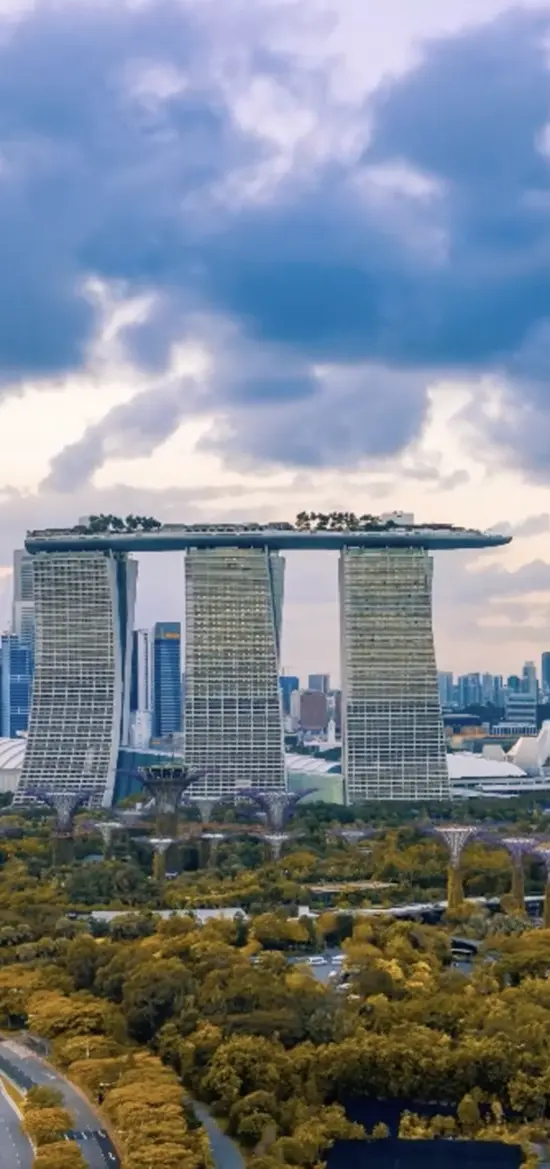
Updated: 08 Sep 2025
Permanent Residency in Singapore
If you’re looking to apply to become a permanent resident (PR) in Singapore, you probably already know of all the perks that come with staying in Singapore. The city has been consistently ranked as one of the top cities in the world to live in, with many perks such as healthcare and housing to name a few.
No matter if you’re looking to settle down here for work or just for a change in environment, this guide will help you tackle this task step by step.
How do I become a PR?
There are three schemes that you can apply for to attain your permanent residency in Singapore. While we will be going through what these schemes are, the bulk of our guide will be focused on applying for PR under the PTA scheme.
Foreign Artistic Talent Scheme (ForArts)

Image credit: https://silverkris.singaporeair.com/inspiration/food-drink/tours-experiences/asian-artisanal-cheese/
The ForArts scheme was introduced in 1991 and is meant for outstanding international art professionals who have contributed to the local arts and cultural scene. To be eligible for this scheme, the applicant must meet the following criteria:
- Relevant training or experience in their field of practice
- Outstanding achievements in the field of performing arts, visual arts, literary arts, design and/ or media
- Significant contributions to Singapore’s arts and cultural scene
- A strong track record of local engagements at a leadership level
- Concrete future plans to be involved in Singapore’s arts and cultural sector
However, success rates under this scheme are not high. Unless you are certain that you meet the above requirements, it is recommended that you apply under the GIP or PTS scheme instead.
Global Investor Program (GIP)

The GIP scheme is a program for individuals and entrepreneurs who are keen to invest in or initiate new business activities in Singapore. Spouses and children of investors are also eligible for permanent residence. You are eligible to apply for GIP if you:
- Have a substantial business track record; and
- A successful entrepreneurial background
If the above are met, you will then be able to choose from two GIP investment options:
- investing at least S$2.5M in a new business entity or expanding an existing business operation in Singapore.
- Investing at least $2.5M in a GIP-approved fund that invests in Singapore-based companies.
If your GIP application is successful, you will also be issued a Re-Entry Permit (REP) valid for five years upon the approval of PR status. This will allow you to travel in and out of Singapore while still retaining your PR status.
Professional/Technical Personnel & Skilled Worker (PTS)

The PTS scheme is the most popular scheme to become a PR in Singapore – it’s estimated that around 95% of professionals attain their PR status through this scheme. It allows current holders of Employment Pass, S-pass, or Entrepreneur Pass to apply for PR.
Your spouse and children aged under 21 years are also able to apply for the Singapore PR status together with you. However, male dependents will be liable for Singapore National Service once they are granted permanent residency.
Filing for Singapore with a Singapore Work Pass
If you are holding onto a work pass, your best bet would be to apply under the PTS scheme. That aside, here’s what to do to ensure a higher success rate.
Step 1: Think about the time to apply for PR
Theoretically speaking, you can make the application the day you start working in Singapore. But since one of the application requirements is to provide six months of payslips from your employer, this means that you should also wait for a minimum of six months before applying for your PR status.
However, this is also dependent on the type of employment pass you are holding and the unofficial annual quota set by the government. Do also make sure that you are on good terms with your employer at the time of your PR submission as they will have to complete a section of the form.
Step 2: Think about your chances of approval
When applying for your permanent residency, you want to prove to the government that you will be an asset to the nation’s development. Being financially solvent and well-educated are just some of the factors that are considered. Here are some other things that government officials look at:
- Belonging to a niche industry
- Skills-set that compliment the local workforce and not compete with it
- Age – you stand a higher chance if you are under 50 years of age
- If you have obtained your qualifications from reputable institutions
- Family ties in Singapore
- If you do voluntary work and contribute in general to your neighbourhood and local community
- If you have worked in Singapore for at least 12 months before applying for Singapore permanent residency
- The credentials of your employer. The more established your company is, the better.
- Your character, such as whether you are a law-abiding citizen.
Step 3: Filing for PR for your children

Image credit: The Straits Times
If you’re planning to settle down here, it’s likely that you’ll be bringing your family over with you. While your children are eligible for PR status, males must register for military service.
Step 4: Necessary documents and filing requirements
After completing the steps above, you want to start filing your forms. The most straightforward way to do that would be to download all the necessary forms from the ICA website. The forms you will need are titled Form 4A and Accompanying Notes to Form 4A that are listed under the PTA scheme.
Form 4A consists of the PR Application Form and Annex A. The PR Application Form requires you to fill in information about you and your family, including basic information such as educational and professional history. Annex A is to be completed by your employer, who needs to explain the nature of their business and confirm your employment and salary details.
Accompanying Notes to Form 4A should be read before filling in Form 4A, and will also guide you on how to prepare the documents needed.
Step 5: Preparing supporting documents
The documents that you will need will all be stated in the documents listed above (which you would have downloaded). Having more, and accurate paperwork is likely to help boost the impression your profile makes on officials. Here are some other notes that you should take into account:
-
- Make a scanned copy of each supporting document and keep the original as well. You will be required to upload the scanned copies for submission of your PR application.
- Provide official English translations for documents that are not in English. The best way is to get it done and stamped at your embassy. Be sure to scan both original and translated versions of the document
- Previous appointment letters, performance evaluation reports and recommendation letters are useful.
- If you own property in Singapore, provide documentation for them. This contributes positively to your financial position and long-term intention of staying in Singapore.
- Attach a most recent copy of your CV/Resume.
- Prepare a cover letter that explains your desire to stay in Singapore, your family and financial stability, as well as your decision to become a Singapore PR.
Now that you’ve got everything in place, you’re ready to fill in your application form. Be meticulous, and fill in everything truthfully. This will allow the application and screening process to be much smoother. Good luck!
How much does it cost?

Each applicant is required to pay a non-refundable fee of $100. If your application is approved, you will need to pay another $120 per person to cover Entry Permit, 5-year Re-Entry Permit and Identity Card issue.
How long does it take?

If you’re the kind of person who hates waiting, here’s some bad news for you. Though it takes roughly 4-6 months for ICA to process the application, the reality is that you may have to wait for almost 12 months. This is as there is a cap on 30,000 applicants granted PR each year. Some even wait for 12 months to only find out that they are rejected.
What if I get rejected?

Image credit: https://successunlimited-mantra.com/index.php/blog/handling-rejection
There’s no limit to the number of times you can apply, so apply again! Plenty of people get rejected each year despite ticking all the boxes. It’s best to wait for at least 6 months before re-applying – use this time to boost your skills, get a higher salary and obtain property.
Permanent Residency in Singapore
Applying for permanent residency itself is a pretty straightforward task, but ensuring that your affairs are all in order is where it gets a little more tricky. Be sure to have everything settled before applying for a smoother application and higher success rate. If you are an entrepreneur that seeks help in entrepreneur pass and employment pass application, you can reach out to us at Margin Wheeler where we'll help coordinate everything for you.






